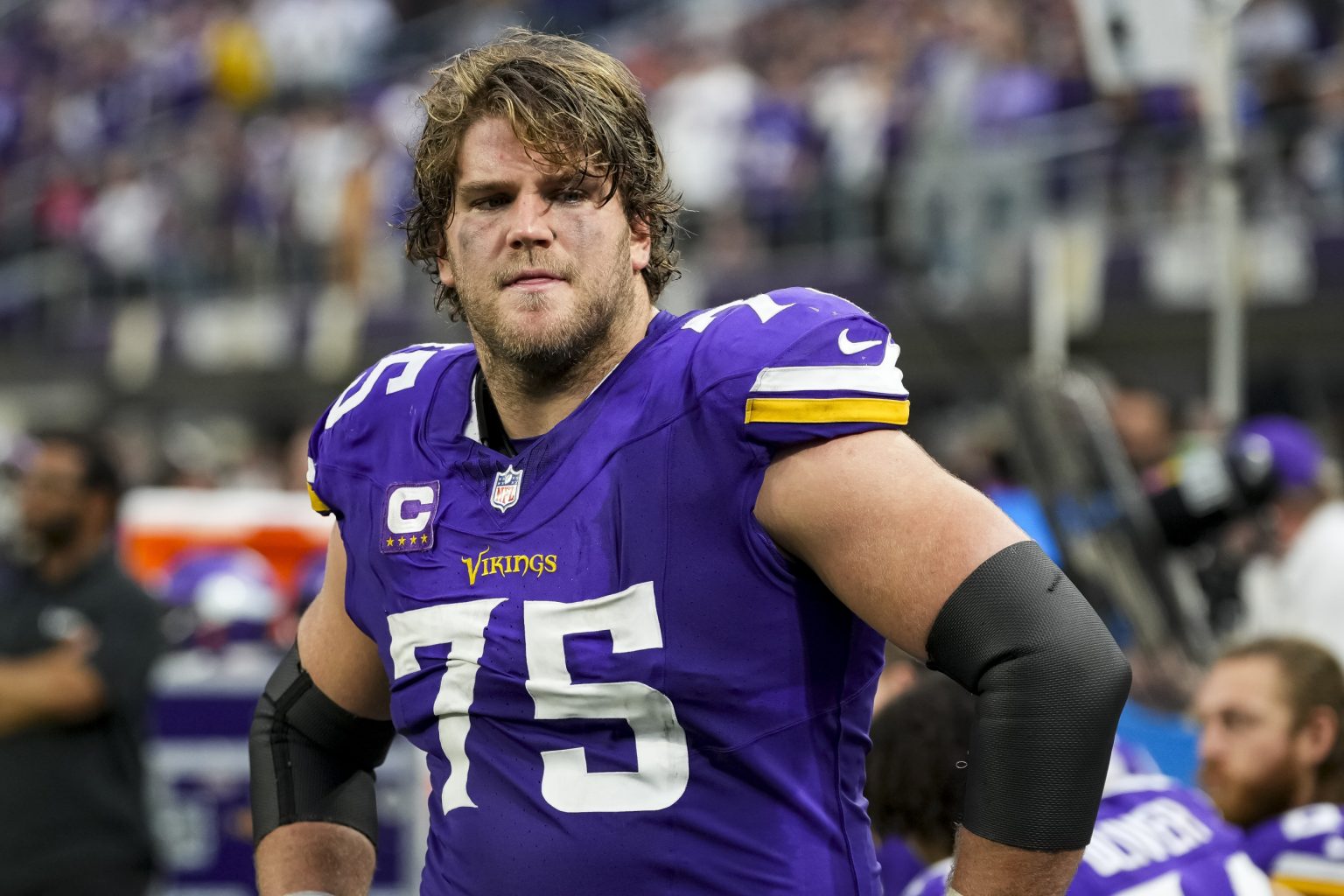Brian O’Neill’s departure from the field due to an apparent injury cast a shadow over the Minnesota Vikings’ game, raising immediate concerns about the severity of the injury and its potential impact on the team’s offensive line. The starting right tackle, a crucial component of the Vikings’ pass protection and run blocking schemes, exited the game in the first half and was subsequently escorted to the locker room for further evaluation. The initial reports provided no specific details about the nature or extent of O’Neill’s injury, leaving fans, coaches, and analysts anxiously awaiting updates. The absence of definitive information fueled speculation about various possibilities, ranging from minor sprains or strains to more significant injuries that could potentially sideline the Pro Bowl tackle for an extended period.
The sudden loss of O’Neill underscored the precarious nature of NFL games, where the health and availability of key players can shift dramatically in an instant. The offensive line, in particular, is a unit where cohesion and continuity are paramount, and the absence of a starting tackle can disrupt the delicate balance required for effective offensive execution. O’Neill’s reliability and consistency have made him a cornerstone of the Vikings’ offensive line, and his potential absence would force the team to reshuffle its personnel and potentially adjust its game plan. The coaching staff would face the challenge of identifying a suitable replacement and ensuring that the adjusted offensive line could maintain a level of performance necessary to protect the quarterback and open running lanes.
The Vikings’ immediate concern centered on determining the extent of O’Neill’s injury and the timeline for his potential return. Medical evaluations, including imaging scans and consultations with specialists, would be crucial in assessing the damage and formulating a treatment plan. The team’s medical staff would exercise caution and prioritize O’Neill’s long-term health, recognizing the risks associated with rushing a player back from injury before he is fully recovered. While the Vikings undoubtedly hoped for a swift recovery, they also had to prepare for the possibility of O’Neill missing significant playing time.
The potential impact of O’Neill’s absence extended beyond the immediate game and could have far-reaching consequences for the Vikings’ season. The offensive line’s performance is inextricably linked to the success of the quarterback and the overall effectiveness of the offense. A weakened offensive line could expose the quarterback to increased pressure, potentially leading to sacks, turnovers, and disrupted passing plays. Furthermore, the running game could suffer without O’Neill’s contributions to opening holes and creating space for the running backs. The ripple effects of his absence could reverberate throughout the offense, impacting the team’s ability to score points and control the tempo of games.
Looking ahead, the Vikings faced the daunting task of adapting to O’Neill’s potential absence and finding solutions to mitigate the impact on their offensive performance. The coaching staff would need to evaluate the available options on the roster and potentially explore external options to bolster the offensive line depth. Developing contingency plans and ensuring that backup players were prepared to step in would be crucial for maintaining continuity and minimizing disruptions to the offensive scheme. The team’s ability to adjust to O’Neill’s potential absence would be a testament to its coaching staff’s resourcefulness and the players’ resilience.
O’Neill’s injury served as a stark reminder of the inherent risks and uncertainties of professional football. The physical demands of the sport expose players to a wide range of injuries, and the Vikings, like every other NFL team, had to navigate the challenges of player availability and adapt to unforeseen circumstances. The team’s response to O’Neill’s injury would be a defining moment, testing its depth, resilience, and ability to overcome adversity. The Vikings’ ultimate success would depend on their collective response to this challenge and their ability to maintain a competitive edge despite the potential loss of a key player.

